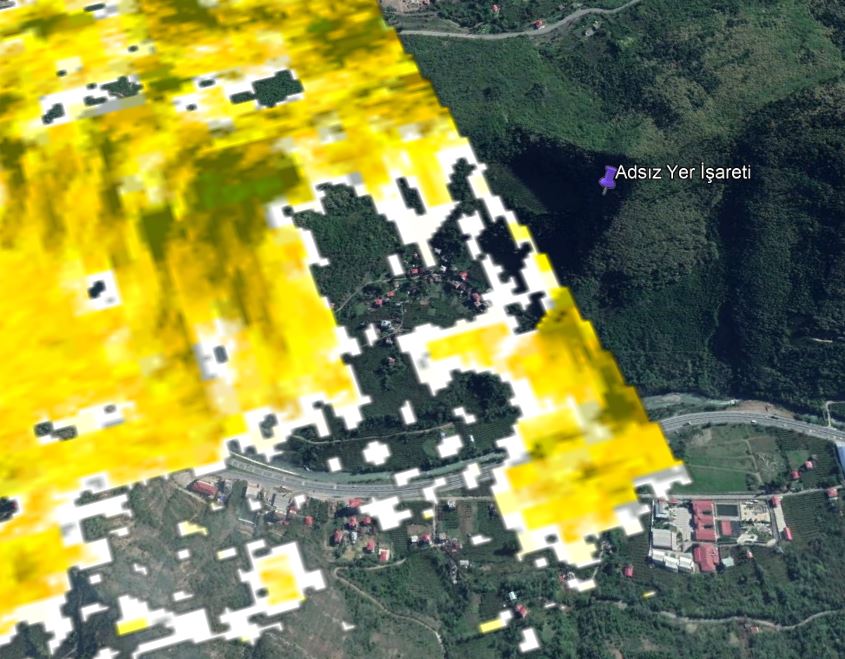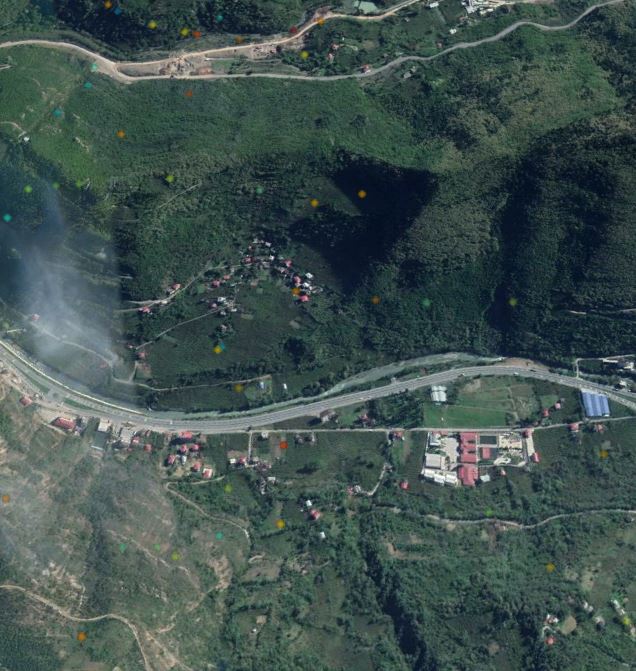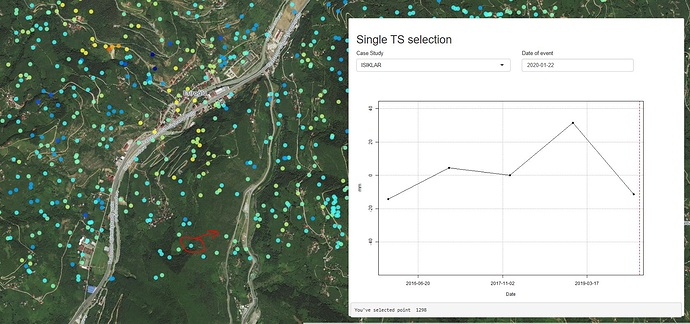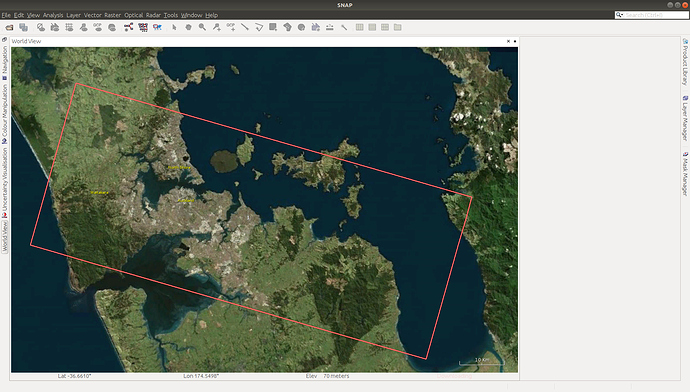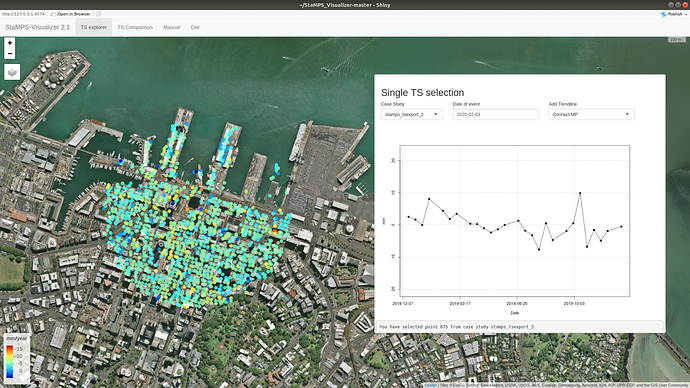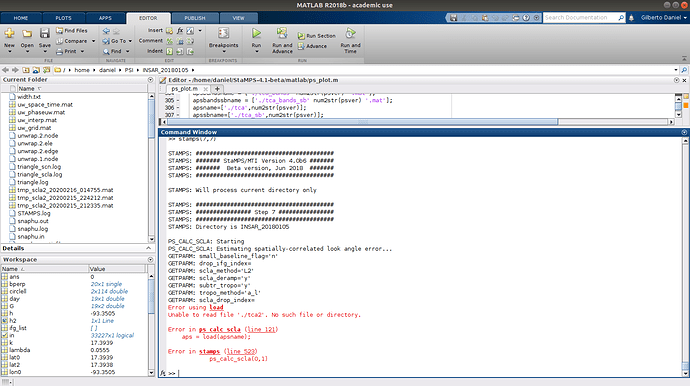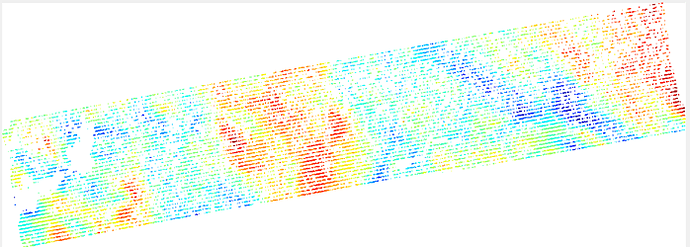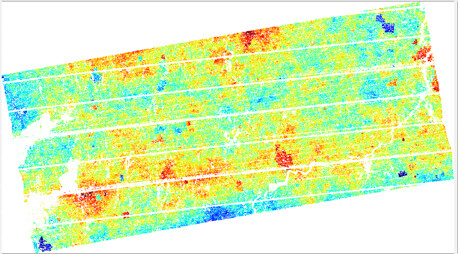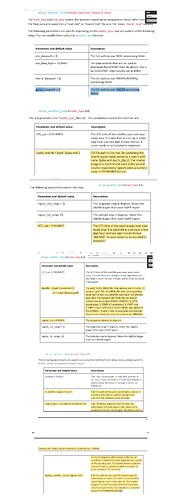Hi all,
Sorry If this is not the right place to post this but I have recently produced my first PS InSAR results and I was hoping to get some advice and have some trained eyes take a look to see how I can improve. Any help is greatly appreciated!
The project I am working on aims to monitor the rate of seasonal ground deformation over Auckland CBD which has been know to be related to shrink swell in clays. Movement has been recorded to be up to 20mm/yr.
I am working on a Linux machine with 32GB RAM and 1TB SSD.
SNAP – version 7
StaMPS – 4.1
TRAIN – 3-beta
For these preliminary results I used 32 descending SLC images from Sentinel-1 frame 716. The data is from 20181205 to 20191224. Roughly 2 images per month.
I processed 2 bursts from IW1 (outlined in the study area fig below) using the SNAP2STAMPS workflow developed by Jose Manuel Delgado.
In StaMPS:
Parameters for mt_prep_snap were as follows:
Amplitude dispersion = 0.4
Number of patches in range = 6
Number of patches in azimuth =3
I then ran steps 1,5 for each Patch individually with:
Weed_standard_dev = 0.8
Merge_resmaple_size= 20
I did this because I was getting a lot of pixels in the water and other noisy pixels and to reduce processing time. But I am still getting a few pixels in the water still.
Then I merged the interferograms and found that some seemed to not unwrap very reliably and not appear smooth – so I removed them to see if it would improve.
The interferograms I removed were:
23 March 2019, 15th June 2019, 07th Sep 2019 and 12th Dec 2019.
Was I wrong to do this? Did these interferograms actually unwrap properly? Is 4 too many to remove?
I’ve attached some of the results from before and after removing the interferograms. Fig1-3 are before removing the interferograms and the rest are after they were removed.
I also used TRAIN to remove atmospheric effects using the linear tropospheric correction. I am working using the GACOS weather model method but have not completed this yet.
The measurements are referenced to a GNSS tidal gauge located on the docks; this was the only one in the area. Does the reference point need to have a PS pixel located exactly at this point?
I have also attached an image from the StaMPS visualizer app showing the area I am interested in. There is still a lot of variation in the ground movement between each point which I assume is related to noise, as there is a lot of construction in the city taking place in the city but any help on how to smooth out my data would be appreciated and any obvious errors I have made, as I’ve tried a few different parameters each time but am still not sure if what I’m doing is accurate.
Thanks,
getparm (2.5 KB)
ps_info (1.2 KB)
Fig1_Wrapped.tiff (1.4 MB)
Fig2_Unwrapped.tiff (1.1 MB)
Fig3_u-dm.tiff (1.1 MB)
Fig4_Unwrapped_drop_ifg.tif (560.9 KB)
Fig5_Wrapped_drop_ifg.tif (558.1 KB)
Fig6_u-dm_drop_ifg.tif (563.6 KB)
Fig7_dem(d).tif (612.5 KB)
Fig8_AOE(m).tif (529.8 KB)
Fig9_u-dao_linear.tif (566.7 KB)
Fig10_v-dao_linear.tif (534.2 KB)
Fig11_v-dao_linear_AOI.tif (401.8 KB)
